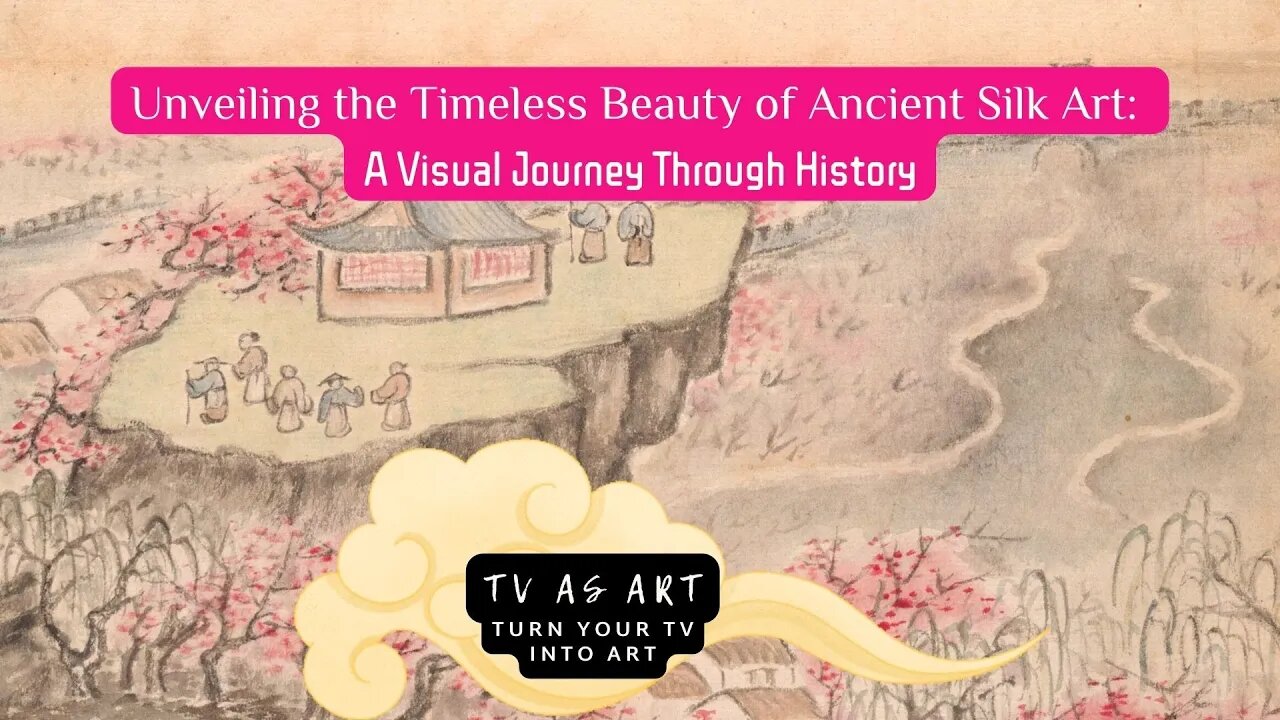Premium Only Content

Exploring Silk Art Vintage Chinese Landscapes and Calligraphy
Exploring silk art in vintage chinese landscapes landscapes and calligraphy by Gao Fenghan who was a petty bureaucrat in Anhui Province for about a decade after passing the local-level civil-service examination in 1727. Then, in 1737, Gao not only lost his government position, but his right hand became paralyzed as a result of acute rheumatism. He came to appreciate the crude awkwardness of his left-handed brushwork, which he had been unable to achieve with his right hand, after painstakingly training himself to write and paint with his left hand. He moved to a Buddhist monastery in Yangzhou to support himself through his painting, where he became close friends with the inventive collection of artists known as the Eight Eccentrics of Yangzhou. He left Yangzhou in 1741 to return to his hometown in Shandong Province.
👀👉✨ Join in here and get access to premieres, free gifts and more https://t.ly/A1NR
Qing Dynasty Silk Painting
00:00:00 Landscapes and Calligraphy
00:10:00 Mountains and Waters
00:20:00 Imperial Landscapes
00:30:00 Ethereal Vistas
00:40:00 Nature and Art
00:50:00 Nature's Beauty
Silk art, also known as silk painting or silk dyeing, is a type of traditional Chinese and Japanese art that involves the use of dyes applied to silk fabrics to create colorful, intricate designs. The dyes are applied to the fabric using a brush or other tools, and the fabric is often stretched taut on a frame to prevent wrinkles and ensure a smooth surface for painting.
Silk art can take many forms, including traditional Chinese painting, which is characterized by bold brushstrokes and a limited color palette, as well as more modern, Western-influenced styles. The most popular themes in silk art include nature scenes, landscapes, and portraits, as well as objects such as an old fashioned scale abstract designs.
Gao Fenghan Vintage Chinese Silk Art Depicting Landscapes and Calligraphy
Gao Fenghan was a petty bureaucrat in Anhui Province for about a decade after passing the local-level civil-service examination in 1727. Then, in 1737, Gao not only lost his government position, but his right hand became paralyzed as a result of acute rheumatism. He came to appreciate the crude awkwardness of his left-handed brushwork, which he had been unable to achieve with his right hand, after painstakingly training himself to write and paint with his left hand. He moved to a Buddhist monastery in Yangzhou to support himself through his painting, where he became close friends with the inventive collection of artists known as the Eight Eccentrics of Yangzhou. He left Yangzhou in 1741 to return to his hometown in Shandong Province.
👀👉✨ Join in here and get access to premieres, free gifts and more https://t.ly/A1NR
#archchinese #antique #silkart #exploringart #vintage #vintageart #chinese #chineselandscapes #chinesessilkart #metmuseum #publicdomain #museum #artfortv #usa #tvasart #calligraphy 👀👉✨
-
 LIVE
LIVE
Sarah Westall
1 hour agoTrump’s Economic Plan will Change the World Economic System. Will it Work? w/ Andy Schectman
175 watching -
 LIVE
LIVE
Dr Disrespect
6 hours ago🔴LIVE - DR DISRESPECT - STREAMING UNTIL I GET A 25 KILL GAME
4,169 watching -
 LIVE
LIVE
LFA TV
20 hours agoLFA TV ALL DAY STREAM - FRIDAY 8/1/25
1,256 watching -
 9:24
9:24
Faith Frontline
3 hours agoJordan Peterson CAUGHT OFF GUARD by George Janko’s Jesus Question
241 -
 1:18:23
1:18:23
vivafrei
3 hours agoGhislaine Quiety Moved to Texas Facility? Tish Sues Trump Over Trans E.O. Canada Madness & MORE!
70K47 -
 LIVE
LIVE
Akademiks
6 hours agoShannon Sharpe FIRED. KSOO Found Guilty! Gilbert Arenas ARRESTED! NBA Youngboy 14th kid OTW. 1/30
1,037 watching -
 2:09:16
2:09:16
Tucker Carlson
5 hours agoCandace Owens: Macron, Harvey Weinstein, and Why “Christ Is King” Totally Broke People’s Brains
100K224 -
 55:15
55:15
Michael Button
7 hours ago $0.43 earnedWhy Does This Ancient Symbol Appear Everywhere? - Archaic Lens Interview
3.63K1 -
 2:03:12
2:03:12
Side Scrollers Podcast
6 hours agoBlabs is Absolutely DISGUSTED By Nintendo | Side Scrollers Live
23.3K4 -
 10:40
10:40
MTNTOUGH Podcast w/ Dustin Diefenderfer
7 hours agoBack with the 75th Ranger Regiment: MTNTOUGH Dives Deeper into America's Elite
4.9K1